Seven seed savers in Mali (and how you can support them!)
December 22, 2020Seed savers are key to communities’ food security and food sovereignty.
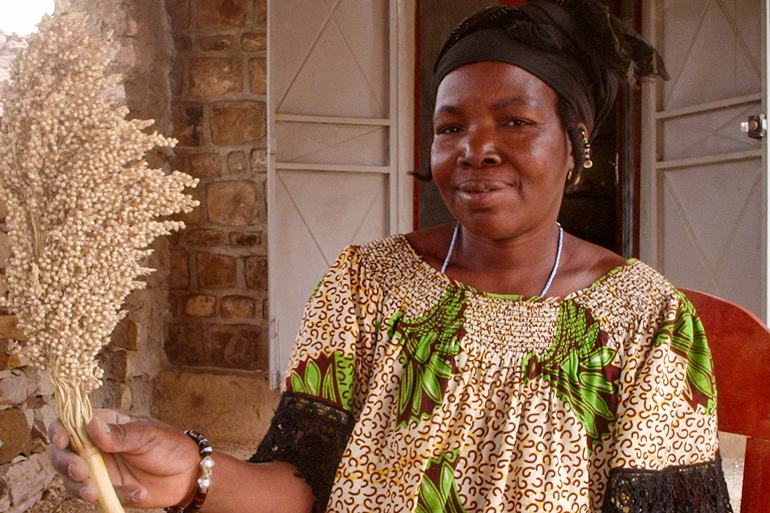
In Mali and all around the world, seed savers are key to communities’ food sovereignty. Their work to grow, save, protect, store and share seeds means farmers can grow good, nutritious, culturally appropriate food.
Here are seven seed savers in Mali who are making sure their communities have access to good seeds!
Aissata Ongoïba, community seed bank manager in Badiari, Douentza circle
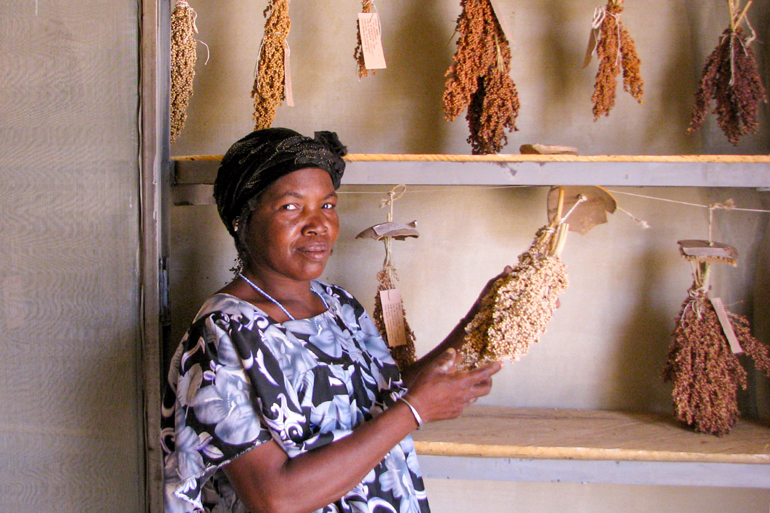
Aissata has run and cared for the community gene and seed bank in her village, Badiari, for more than 25 years!
Her hard work, energy and optimism help keep good, locally-adapted seeds available in her community. Her neighbours save seeds from each harvest for deposit in this storage centre, built to keep seeds safe and viable for future plantings. Seed banks, like the one Aissata runs with the support of our local partner, the Institute for Research and Promotion of Alternatives in Development (IRPAD), are key to making sure there are good seeds to plant when local farmers need them most.
The long term dedication and encyclopedic knowledge of people like Aissata are helping conserve dwindling seed biodiversity.
Give a small gift with big potential!
Support the first building block of sustainable farming: good seeds.
Abdoulaye Diarra, community seed bank secretary in Ouornion, Mopti circle
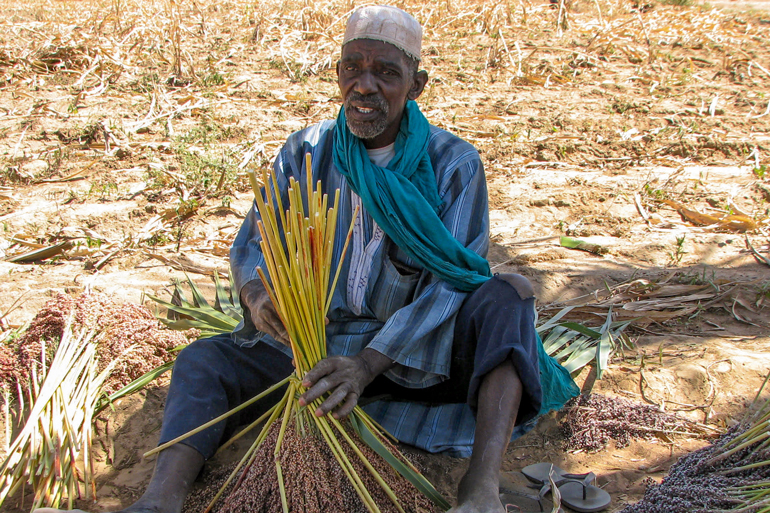
As secretary of his local community gene and seed bank, it’s Abdoulaye’s responsibility to keep careful documentation—like species, variety, year grown and origin—on all the seeds saved there. It’s all about quality control!
(If that sounds familiar, that may be because this documentation is the same as what we encourage you to do when you save your own seeds at home.)
Seed banks like this not only store seeds—they grow more of them too. A multiplication plot is a field where a seed variety is planted out and grown specifically to produce more seeds of that variety. After harvesting the plot, seed bank volunteers select the best quality seeds for saving in the seed bank.
This photo was taken after harvesting and selecting a sorghum plot. Abdoulaye is using a traditional technique to make a packet of sorghum panicles so they’ll be ready for him to document and store.
Sitan Diarra (left) and Sitan Coulibaly (right), seed producers and community seed bank volunteers in Worobanda, Kati circle

Sitan Diarra and Sitan Coulibaly are both volunteers at their local community seed bank, ensuring the seeds are stored in clean and orderly conditions. It takes many volunteers to keep community seed banks running and full of quality seeds!
In Mali, where men own most agricultural plots—86 per cent of them—being a woman who farms can be a struggle. Land is hard to get and when women do manage to access it, their farms are on average a third of the size of men’s plots.
It turns out, seed growing and saving is a really good use of a small amount of land.
With training from our local partner, Cab Demeso, Sitan Diarra deepened her seed production skills and learned how to rigorously control seed quality when growing and storing seeds, including onion seeds. Today, she can sell seeds of a popular onion variety at a premium, because she was able to attain organic seed production certification, which increases her customers confidence in her product. She takes pride in increasing seed security for farmers around her, by increasing the availability of quality organic seeds.
Amadou Seydou Ongoïba, community seed bank president in Pétaka, Douentza circle
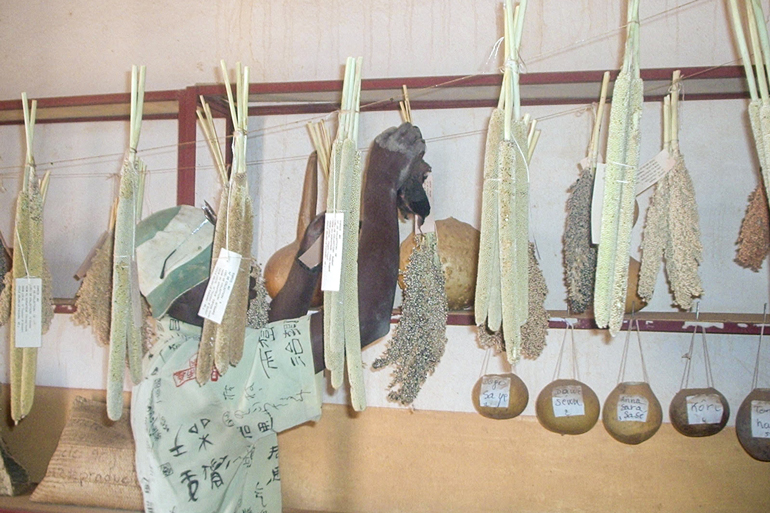
Amadou is president of his local community seed and gene bank. Here, he is in the process of putting away seed selections for safe keeping in the seed bank. In just one small area of the seed bank, there are six different varieties of millet and eight varieties of sorghum.
Community seed banks are deeply invested in saving a wide diversity of seeds. Different varieties of any given crop have different strengths and weaknesses, so having access to lots of varieties acts as a kind of insurance policy for farmers. If one seed performs poorly in your growing conditions, you have many others to choose from.
Fanta Traoré, seed producer and community seed bank volunteer in Zorokoro, Bougouni Circle
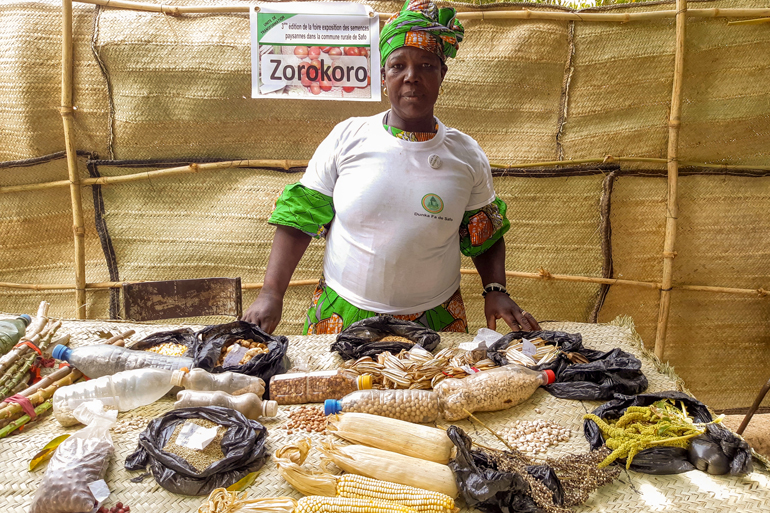
Besides being a practiced seed saver and grower, Fanta is a mentor to new generations of seed savers in her community. Here, she is at a local seed fair, representing her village and community seed bank, and displaying seeds they have to share and swap.
Community seed banks are much more than a physical building. They are themselves a community. They wouldn’t exist without local farmers like Fanta managing, cleaning, organizing, using and replenishing the seed stores year after year.
That’s one of the major differences between a community seed bank and a seed bank like the Svalbard Global Seed Vault: community seed banks keep seeds in farmers’ hands. And because they’re planted, grown and harvested regularly, these seeds continue adapting to changing environmental and climate conditions.
Hamadoun Bore, community seed bank secretary in Doumbara, Douentza circle
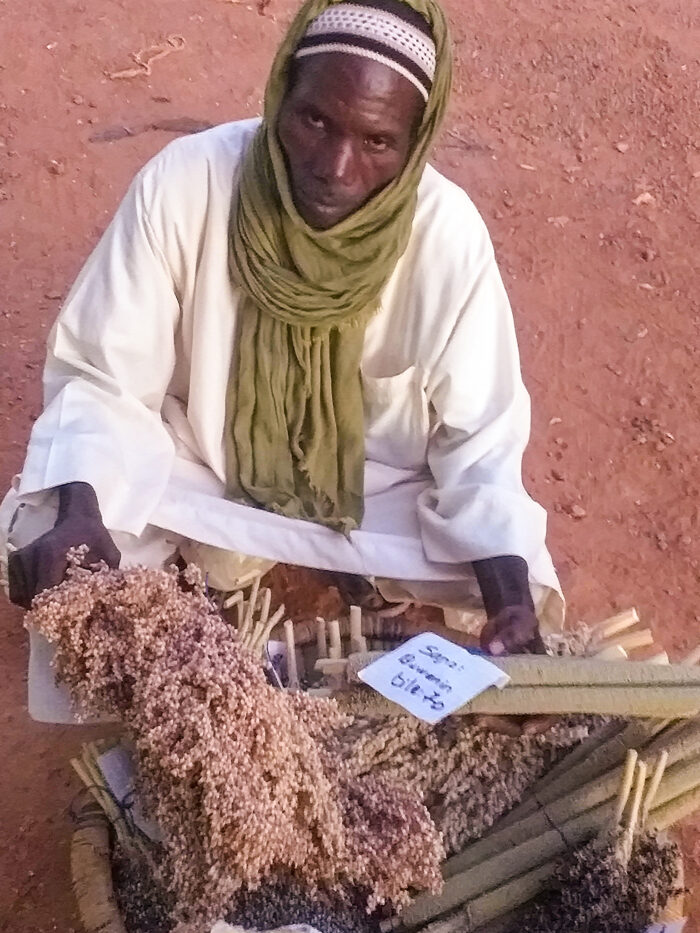
Hamadoun is secretary of his local community gene and seed bank. Like Abdoulaye above, it’s his job to keep detailed records of the seeds that come into the bank, whether from local farmers or harvested from a multiplication plot.
In this photo, Hamadoun has a basket of seed selections from multiplication plots of millet and sorghum, that are packaged, tagged and ready to be stored in the seed bank.
Community seed banks, and the seed savers who keep them running, are key nodes of farmers’ seed systems. Learn more in our recent publication, “Farmer seed systems: A critical contribution to food sovereignty and farmers’ rights.”